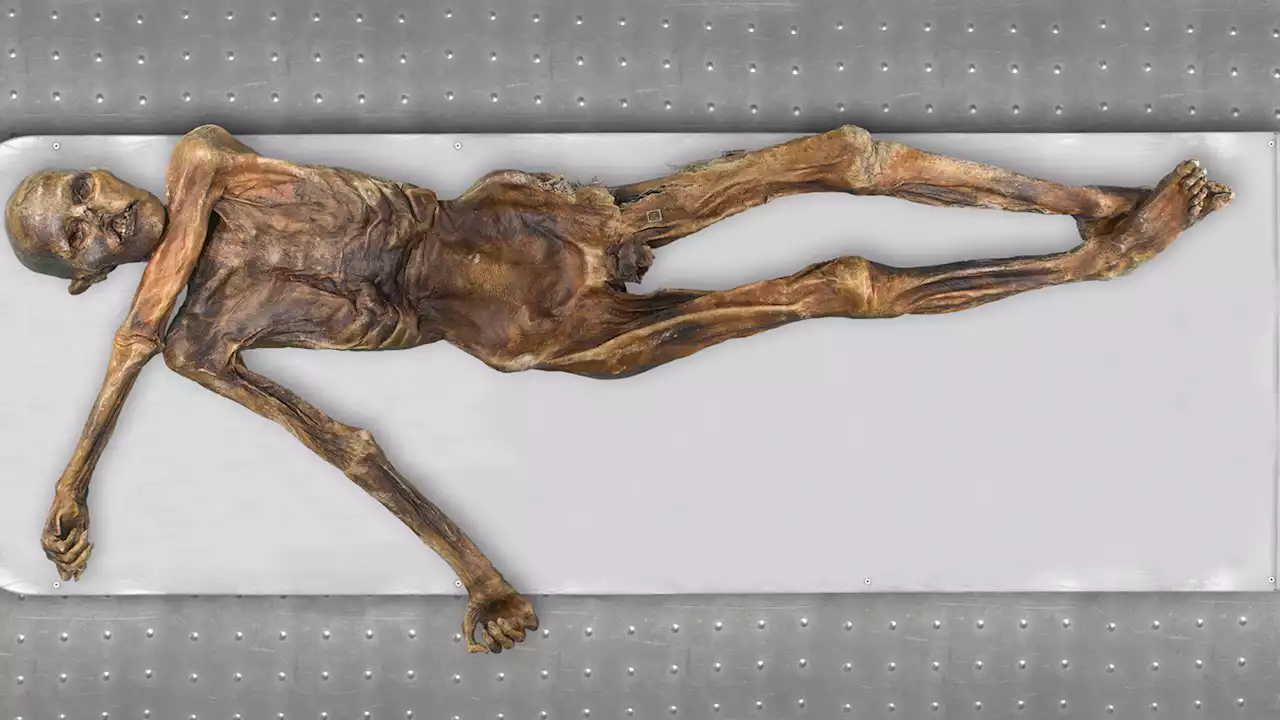A research team has used advanced sequencing technology to analyze Ötzi's genome to obtain a more accurate picture of the Iceman's appearance and genetic origins.
Ötzi's genome was decoded for the first time more than ten years ago. This was also the first time the genome of a mummy had been sequenced. The results provided important insights into the genetic makeup of prehistoric Europeans. Advances in sequencing technology have now enabled a research team from the Max Planck Institute for Evolutionary Anthropology and Eurac Research to reconstruct Ötzi's genome more accurately.
The genetic makeup of most present-day Europeans has resulted mainly from the admixture of three ancestral groups: western hunter-gatherers gradually merged with early farmers who migrated from Anatolia about 8,000 years ago and who were later on joined by Steppe Herders from Eastern Europe, approximately 4,900 years ago.
The initial analysis of the Iceman's genome revealed genetic traces of these Steppe Herders. However, the refined new results no longer support this finding. The reason for the inaccuracy: the original sample had been contaminated with modern DNA. Since that first study, not only have sequencing technologies advanced enormously, but many more genomes of other prehistoric Europeans have been fully decoded, often from skeletal finds.
The study also yielded new results about Ötzi's appearance. His skin type, already determined in the first genome analysis to be Mediterranean-European, was even darker than previously thought.
Our previous image of Ötzi is also incorrect regarding his hair: as a mature man, he most likely no longer had long, thick hair on his head, but at most a sparse crown of hair. His genes, in fact, show a predisposition to baldness."This is a relatively clear result and could also explain why almost no hair was found on the mummy," says Zink.
Malaysia Latest News, Malaysia Headlines
Similar News:You can also read news stories similar to this one that we have collected from other news sources.
 Ötzi the iceman was dark-skinned and balding, suggests genome analysisThe genome of Ötzi, the 5300-year-old mummified man found in the Alps, was first published in 2012, but a more accurate readout has changed the story of where his ancestors came from
Ötzi the iceman was dark-skinned and balding, suggests genome analysisThe genome of Ötzi, the 5300-year-old mummified man found in the Alps, was first published in 2012, but a more accurate readout has changed the story of where his ancestors came from
Read more »
 Genetic Analysis of ‘Ötzi the Iceman’ Reveals Ancient Mummy’s AncestryScientists revisiting the famous mummy’s genome found he had dark skin and was probably bald in life.
Genetic Analysis of ‘Ötzi the Iceman’ Reveals Ancient Mummy’s AncestryScientists revisiting the famous mummy’s genome found he had dark skin and was probably bald in life.
Read more »
 Unlocking the Iceman: Advanced Genetic Analysis of “Ötzi” Reveals Surprising Ancestral Roots and AppearanceScientists used advanced sequencing technology to analyze Ötzi’s genome to obtain a more accurate picture of the Iceman’s appearance and genetic origins. Ötzi's genome was decoded for the first time more than ten years ago, which was also the first time the genome of a mummy had been sequenced. T
Unlocking the Iceman: Advanced Genetic Analysis of “Ötzi” Reveals Surprising Ancestral Roots and AppearanceScientists used advanced sequencing technology to analyze Ötzi’s genome to obtain a more accurate picture of the Iceman’s appearance and genetic origins. Ötzi's genome was decoded for the first time more than ten years ago, which was also the first time the genome of a mummy had been sequenced. T
Read more »
 A new look at Ötzi the Iceman's DNA reveals new ancestry and other surprisesÖtzi had genetic variants for male-pattern baldness and dark skin, and he also had an unusual amount of early farmer ancestry, a new DNA analysis finds.
A new look at Ötzi the Iceman's DNA reveals new ancestry and other surprisesÖtzi had genetic variants for male-pattern baldness and dark skin, and he also had an unusual amount of early farmer ancestry, a new DNA analysis finds.
Read more »
 Ötzi the Iceman may have been bald and getting fat before his murder 5,300 years agoA new DNA analysis reveals that Ötzi the Iceman was genetically predisposed to male-pattern baldness, diabetes and obesity.
Ötzi the Iceman may have been bald and getting fat before his murder 5,300 years agoA new DNA analysis reveals that Ötzi the Iceman was genetically predisposed to male-pattern baldness, diabetes and obesity.
Read more »
 New DNA analysis reveals origins of Oetzi the Iceman as present day TürkiyeIt is determined that Oetzi is a descendant of farmers from today's Türkiye. He was also balder and had darker skin than what was initially thought, shows study.
New DNA analysis reveals origins of Oetzi the Iceman as present day TürkiyeIt is determined that Oetzi is a descendant of farmers from today's Türkiye. He was also balder and had darker skin than what was initially thought, shows study.
Read more »
